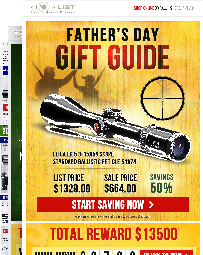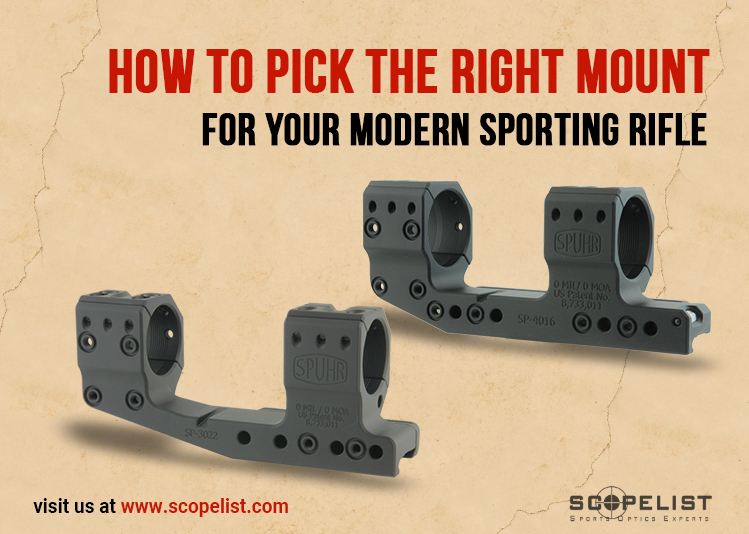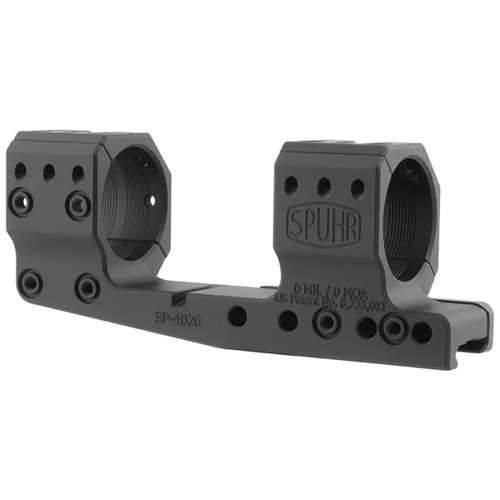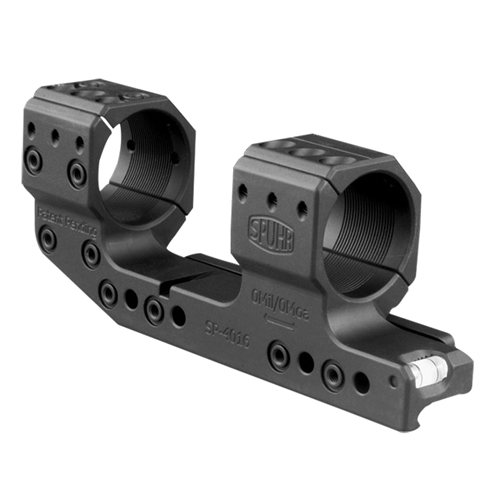Are you putting a magnified optic on your AR15 or AR10 pattern rifle? Have you mounted a hundred scopes on bolt action rifles but never done it on an AR? Are you new to modern sporting rifles or just building a new setup? If you answered yes to any of those questions, you’ll want to continue reading our guide on how to pick the right mount!
Please note the mounting guidelines here are applicable for most modern sporting rifles including the FN SCAR, CZ Bren and Scorpion EVO, Sig MCX and MPX, and more, and bullpup rifles like the Desert Tech MDR and MDRx, IWI Tavor, Steyr AUG, Springfield Helion, and more.
Mount height
Mount height is an important consideration for mounting a scope on an AR. When mounting a scope on a bolt action rifle, for example, most shooters want the scope mounted as low as possible, but on an AR this would actually be detrimental to shooting comfortably. On an AR or similar rifle, the sights are set above the rail, usually almost an inch and a half up. Likewise, the standard scope mounting height for an AR or similar rifle is an inch and a half (1.50”). If the scope is mounted too low, you may find it difficult to squish your face down low enough to get a sight picture through the scope. For most shooters, 1.50” or thereabouts is where to start.
For some applications, specifically low power variable optics (1-4x, 1-6x, etc.), some find mounting the scope higher to be more comfortable. A 1.70” or even 1.93” mount height can allow for a more “heads up” position which can allow quicker acquisition of your sight picture. The downside to this is that the higher you go, the less cheekweld you have, and for most shooters using a 1.93” mount, cheekweld isn’t a question and chinweld is about as good as it gets. This is important because most low power variable scopes do not have adjustable parallax. Without this, consistent cheekweld is necessary for consistent groups at longer ranges, and relying on chinweld may not always produce consistent results. For closer range use, cheekweld and parallax are much less of an issue. If you are planning to shoot more than 200-300 yards or so, stick with a 1.70” height mount or lower.
20 MOA cant?
Like getting the right mount height, determining whether or not you need a canted mount is critical, and dependent upon your use case. In most cases, a 20 MOA cant mount is only necessary if you are shooting past 600-800 yards, depending on your bullet drop and scope.
Large, heavy bullets like those used in the .308 cartridge for long range shooting will drop significantly after a few hundred yards. If your scope does not have a large elevation travel adjustment range, you may find it difficult or impossible to adjust your elevation dial enough for shooting at long range distances. In this scenario, a 20 MOA mount will cant the scope downward, so when you are lobbing rounds downrange with your barrel pointed upwards, the scope will be more level with the ground. Keep in mind that a canted mount may prevent you from zeroing at closer distances, so zeroing at 200 yards or further is your best best.
For closer range shooting, a canted scope mount is not necessary and as noted above, may impede your ability to zero your scope at such ranges. In most cases, a canted mount is not necessary for AR15 rifles chambered in .223 due to limited effective range, or for AR10 rifles chambered in 6.5 Creedmoor due to the relatively little bullet drop with this cartridge.
To Cantilever or not to Cantilever?
Finally, whether or not you need a cantilever mount is determined by the rifle and scope combo, as well as your body geometry. For rifles with an independent upper receiver and handguard, like most AR15 or AR10 pattern rifles, you want your scope mounted entirely on the upper receiver of the rifle. Mounting your scope partially on your upper and partially on your handguard (known as “bridging the gap”) can put undue stress on your scope and may cause shifts to your zero. Cantilever scope mounts are intended to mount your scope further forward than the end of the rail on your receiver, and solve this issue.
For AR15 rifles, a cantilever mount is usually our best choice. If your scope has a particularly short eye relief and/or you have a particularly long stock, it may not be strictly necessary, but for 95% of shooters, a cantilever will work well.
For AR10 rifles, a cantilever mount is not usually necessary. The AR10 has a longer receiver than the AR15, and as such has more room for you to mount a scope. For 95% of shooters, a cantilever mount is not necessary. If you have a scope with particularly long eye relief or you use a particularly short stock, a cantilever mount may be necessary.
For rifles with a monolithic upper and handguard, like the SCAR series of rifles, a cantilever mount is not necessary because there is no danger of “bridging the gap”. A cantilever mount is inherently weaker than a non-cantilevered mount, so if a cantilever is not necessary, it is best to avoid it.
Recommendations
Spuhr makes top tier mounts in Sweden that are virtually bombproof and are packed with great features. An integrated bubble lever at the rear of the mount is quite handy for ensuring your dop is accurate at long ranges, the 6 screw rings and divided at a 45 degree angle to ensure your turrets are not obscured by the rings, and the mounts come standard with a leveling wedge so you can ensure your reticle is perfectly level with your rail and rifle. Furthermore, Spuhr mounts make it easy to add accessories such as offset red dots, angle degree indicators, or rails.
The below mounts will work for 95% of users for 95% of scopes:
FAQ
Around 1.5” height will work for most users.
Only if you are shooting past 600-800 yards with a high power scope.
Spuhr Cantilever 1.5” height, 0 MOA
Yes, most users do.
No, most users do not.






